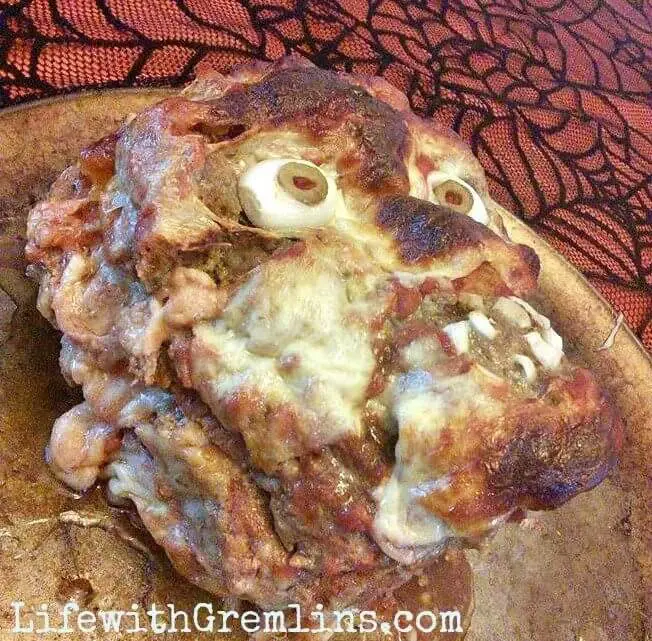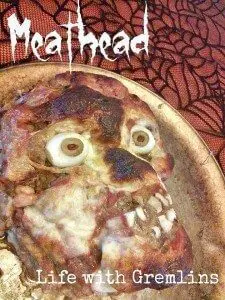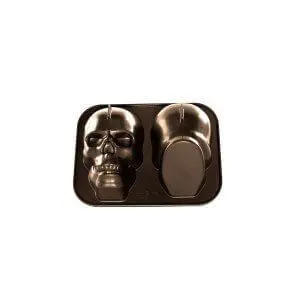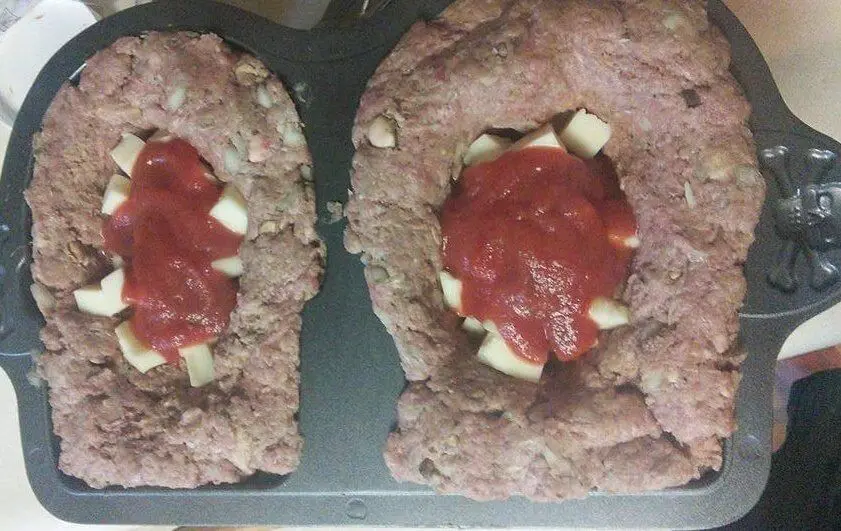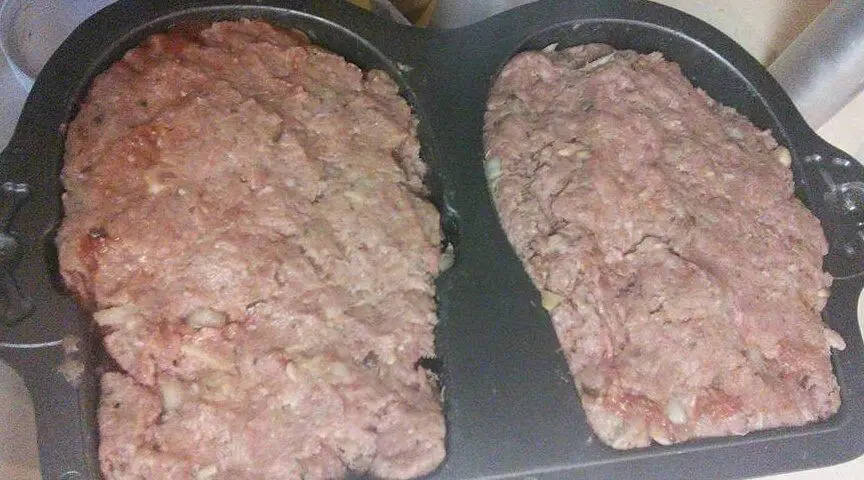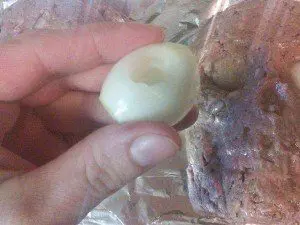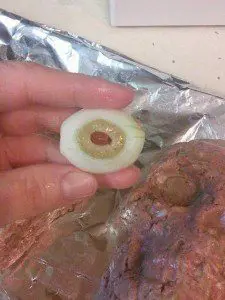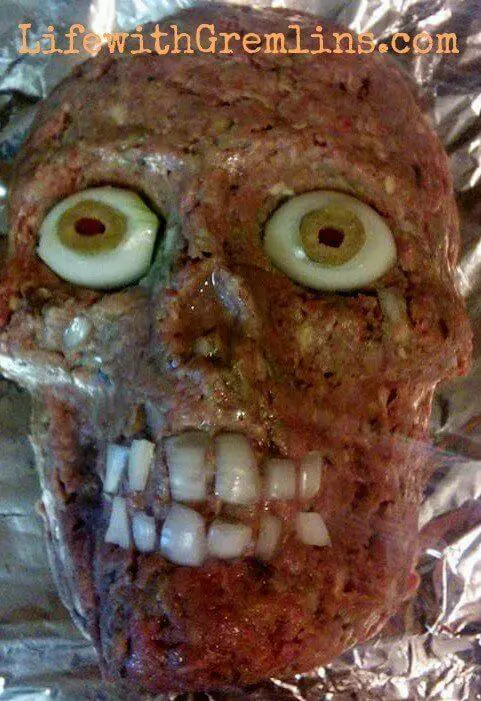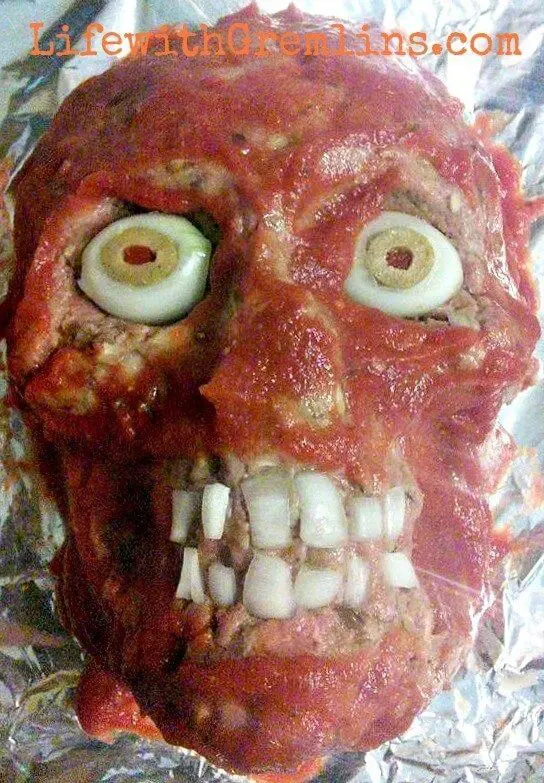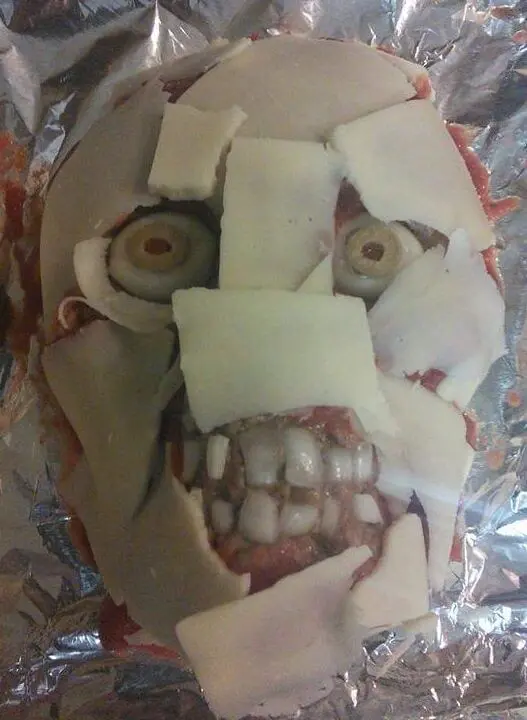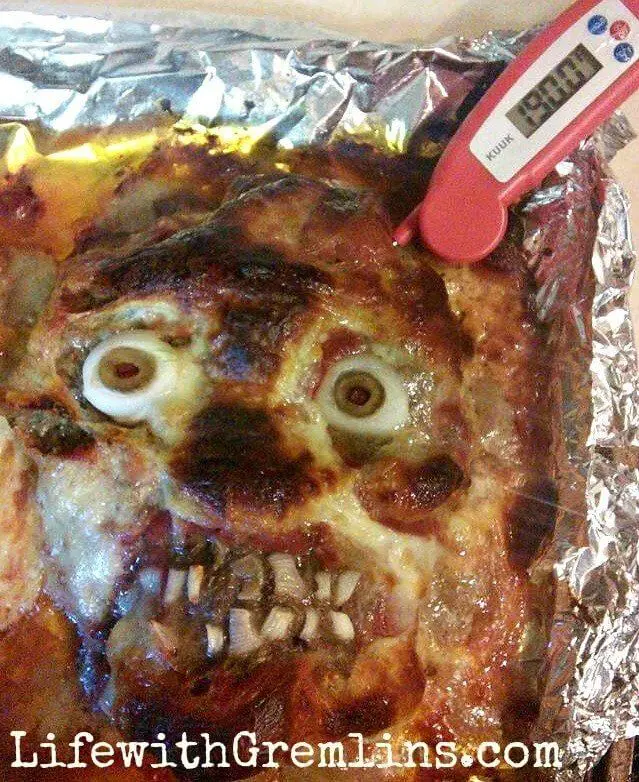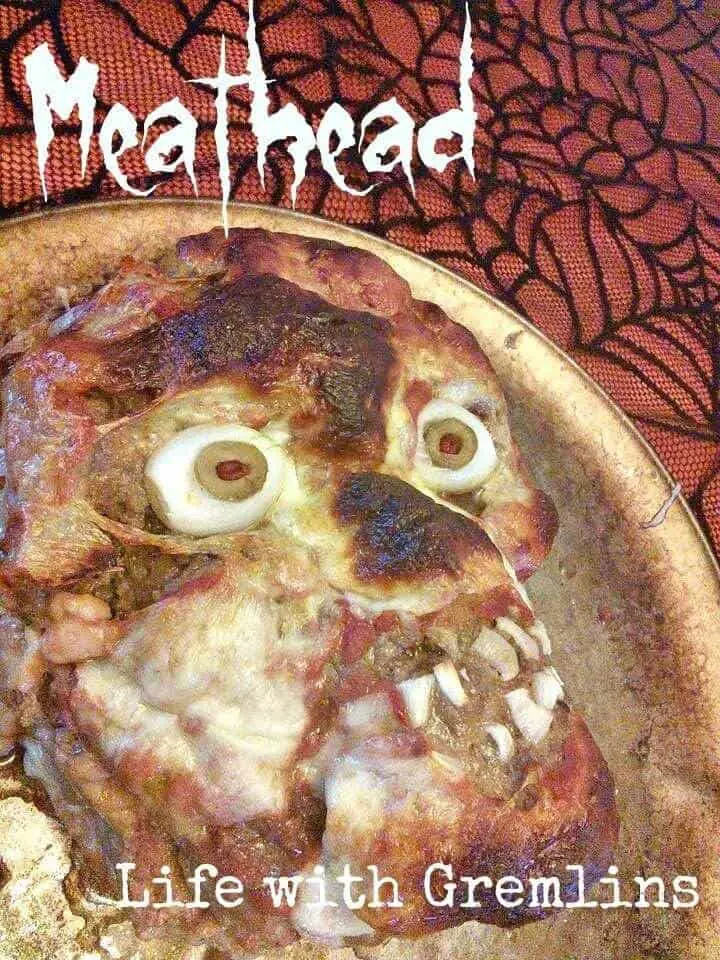Being that I love cake and Halloween enough to get a skull-shaped cake pan as a birthday gift, it’s a bit odd my first thought on seeing said pan was not, “That is going to make an awesome cake.” It was actually “OMG, I have to make a meatloaf skull!” A few years back I saw this quite cool recipe from Not Martha on making a realistic meatloaf hand, and that recipe really stuck with me I guess, because it overrode cake. Anyway, chances are you don’t give two sprinkles why I decided to make a Halloween meatloaf skull, you just want to know how to make one, so let’s get to that.
First, you kind of need the 3D skull pan, though if you are more artistic than I, you may be able to sculpt yourself a head and deprive Amazon of about $30. Assuming you have or buy a pan, you’ll need to grease it well. The rest of this meatloaf skull recipe also assumes you use the pan because I did.
Next, prepare about 4 lbs of meatloaf. I will share my recipe at the end of this post, which includes a handful of chopped mushrooms, 2 small onions, bread heels soaked in milk, spices to delicious, and some egg, but the recipe you use is irrelevant. Everybody has a favorite meatloaf recipe—feel free to use yours.
Once your meatloaf is ready, set it aside and prepare a small pan of chunk-free marinara sauce. “What?” You may be thinking, “Why do I need pasta sauce for meatloaf?” Well, Not Martha used ketchup, and what is marinara if not better-tasting ketchup? I also decided to stuff my Halloween meatloaf skull with mozzarella and sauce so that when it was cut brain-like material would leak out.
This coincidentally made it taste sort of like noodle-free lasagna—spooky and tasty. The sauce I made was very simple. It’s just one can of tomato sauce spiced to taste (garlic powder, pepper, salt, parsley, oregano, and a bay leaf is a good start). On that note, you can display your meatloaf skull on a bed of pasta with sauce and let guests detach head bits to make it a main course. I’ve made this for quite a few parties now, and both options are always a hit. It’s become one of my favorite Halloween meat dishes. My kids even sometimes request it just as a Halloween dinner.
Back to the recipe, let your sauce simmer while you cut some mozzarella cubes and thin slices. When finished, pack the vast majority of your meatloaf into the pan leaving a hallow compartment in each side for the mozzarella cubes and some sauce. Here’s a photo example of how to do that, if you’re a visual learner.
Close these compartments with the not-vast-majority of your meatloaf you should still have on hand. Now, you should have two stuffed meatloaf loaves that look like this:
This was the point in my recipe that I had to make a call. My friend suggested cooking it for a bit, and then removing it from the pan to add the face details. I worried that wouldn’t work well with things like eyes. So, I lined a baking sheet with tinfoil and plopped my cake pan upside down. That’s why a well-greased pan is key—out popped a perfectly-sculpted stuffed meatloaf skull.
First, Frank needed eyes (I decided to name him Frank). Initially, I was just going to place half of a white onion in each of the skull mold indentations, but that seemed insufficiently creepy. How is a meatloaf skull supposed to stare into your soul without pupils? To add those, I cut a small indention in each onion half and hollowed it out to insert the end of a cocktail olive. The effect was super cool. They looked like real eyes. I will say my white onion came from our garden, so if you have trouble finding this small size, you might opt for a shallot. Then, I just added onion chip teeth.
Next, take the remainder of your marinara and paint it on the skull. Then, layer the thin cheese strips over the top. Pop it in the oven at 375 degrees for about 90 minutes. Cook time may vary, so keep an eye on it. This is also ground meat, so be sure to temp your monster creation for food safety reasons. You’ll notice from my meat thermometer in the photo I accidentally overcooked mine a bit. It doesn’t need to be 190 degrees.
Once done, as you can see, there was a bit of brain drippage. I used a spatula to move the meatloaf skull to a clean pan for presentation reasons. I will admit stacking the two sides was a bit tricky, but the end result was the perfect head for our family’s annual Halloween party meat skeleton.
The one issue I found with this recipe, or technique more accurately, is that the skull spread a bit on one side while baking distorting the shape. I am not sure how this could be remedied, but am open to suggestions in the comment section.
Don’t want to read all that? Here’s the quick version—how to make a Halloween meatloaf skull:
Ingredients:
Meatloaf:
4 lbs ground beef
2 onions
1 cup chopped mushroom
6 bread heels soaked in milk
spices to taste
Sauce:
1 can tomato sauce
spices to taste
Stuffing and decorations:
1 lb mozzarella cheese
1 small white onion or shallot
2 green cocktail olives
Instructions:
Grease 3D skull pan.
Make meatloaf by combining the first 5 ingredients in a large bowl by hand. Set aside, and simmer tomato sauce and spices on stovetop.
Cut 1 ½ cups cheese cubes and about 15 thin slices.
Stuff the 3D skull pan with meatloaf leaving a hollow cavity.
Fill cavity each with cheese cubes and a total of ¾ of the sauce, and then close off with more meat mixture.
Flip pan onto cookie sheet
Cut each small onion in half, then hollow out a penny-sized cavity. Cut the end from two cocktail olives, and insert them into the onion holes. Place onions in eye sockets on meatloaf skull. Cut onion chips. Arrange as teeth.
Brush the skull with the remaining sauce and layer with cheese slices.
Bake at 375 degrees for approximately 90 minutes or until internal temperature reads a minimum of 160 degrees. Allow to cool and transfer to a platter or serve over pasta.
